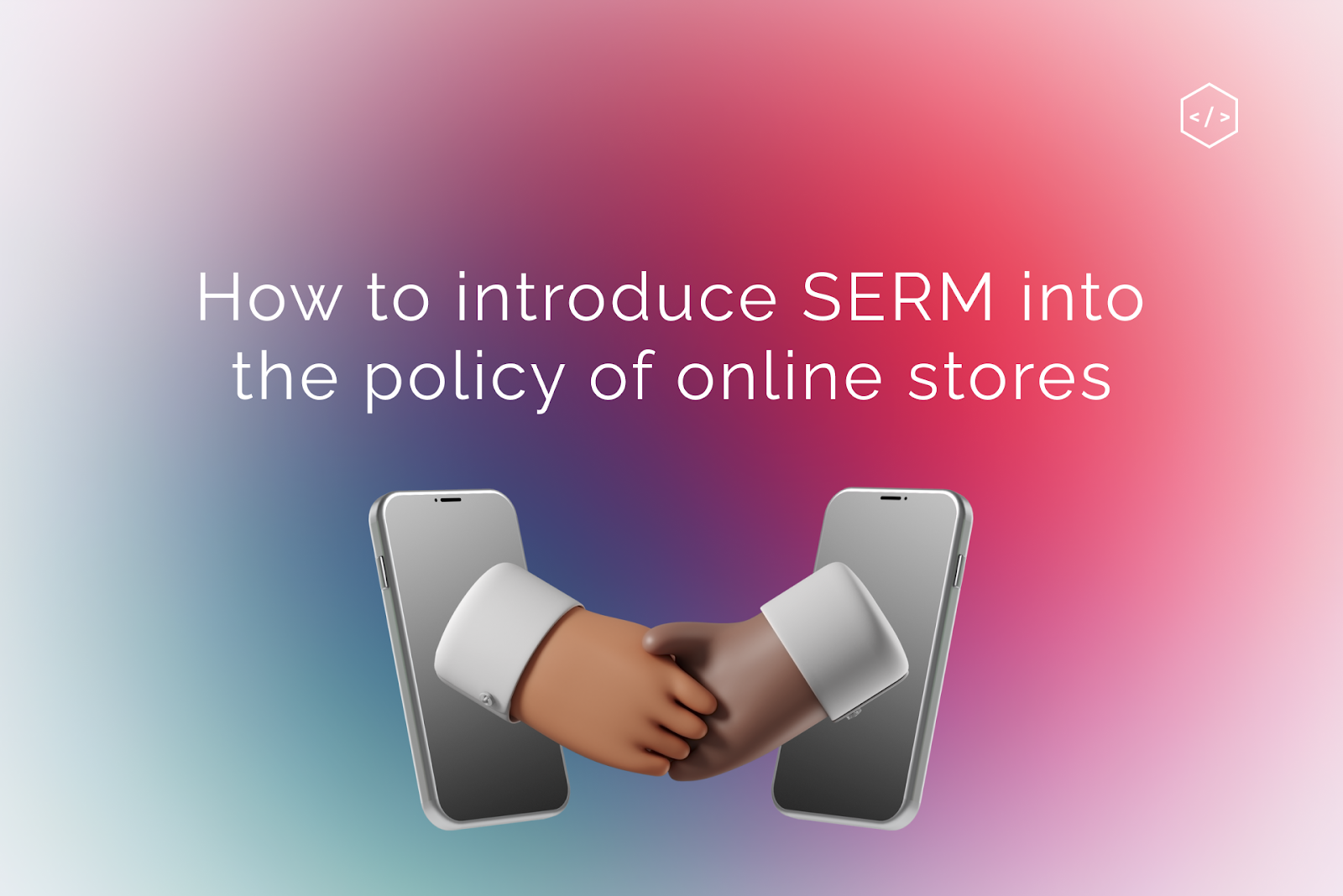SERM and work with the reputation of Internet business

When doing business online, it is crucial to keep reputation in mind and work with reviews, including negative ones. It also applies to standing in search results, where users often find initial information about companies, products, and services. There is SERM, which is also reputation management in search results.
In this article, together with experts, we will analyze how to manage the image of a company, what tools to use for this, and how to check the reputation of a business on the Internet.
The concept and basic principles of SERM
SERM is a set of measures to create a positive image of a company, brand, product, or person on the first pages of search engines. To put it simply: the output of positive information in the TOP and the displacement of the negative. It is done through search promotion and promotions, sometimes through hidden marketing: as a result, users see the business from the best side.
Basic methods and stages of SERM work
In general, the whole set of actions to manage the methods of work of SERM can be divided into three stages.
The first stage is data collection and analysis of current affairs. A business owner or marketer studies the SERPs and focuses first on the negative information, then monitors the positive and highlights the strengths of the brand, product, or company from the point of view of customers, so that they can later be emphasized.
The second stage is the development of a reputation management strategy. At this stage, collecting positive information for the target audience is crucial: the benefits of goods and services, positive reviews, and various kinds of motivation to buy. Sites where you can leave a review play an important role at this stage.
And finally, in the third stage, the developed strategy is put into practice. Ready-made reviews, advertising articles, materials, answers to questions, and stories about a product or service are placed in the search results, not forgetting about search engine optimization. It is also worth working with negative reviews: a seller who responds to criticism in a timely and constructive manner and tries to solve the problem is more trustworthy than one who does not work with negativity.
Main tasks of SERM
The SERM strategy solves many problems. Let's formulate the main ones:
- formation of a favorable reputation for the company, goods/services, brand, or business-related personalities;
- influence the image of the company in the eyes of customers;
- stimulation of demand and sales;
- countering negative reviews (which can come from both competitors and disloyal audiences);
- collecting feedback to improve the quality of goods and services;
- work on the attractiveness of the company, brand, and range for investment and cooperation.
Pros and Cons of SERMs
The SERM technique has many advantages:
- formation of positive feedback about the company as a whole;
- the ability to work with the shortcomings of the company, product, service, or brand based on reputation;
- direct interaction with customers at the final stage of the sales funnel who are already interested in buying.
But there are also disadvantages:
- a positive rating is vital for promotion, but customers are much more likely to share negative information, and obviously, custom reviews look unnatural. It takes a long time to motivate genuine buyers to write a review, especially a positive one;
- search results are constantly changing, and reviews (including negative ones) repeatedly appear, like competitors in the market. Therefore, a SERM specialist must always work with a reputation.
SERM and conversion
Working with the reputation of the company in search engines affects both the attitude of the audience and the direct sales of goods. Let's explain why.
Firstly, reviews directly affect the intention of customers to buy a product or order a service, and most Internet users are limited to studying information on the first, maximum on the second page of search results.
Secondly, reviews, if they are not deliberately custom, are more credible than product descriptions or advertisements. And criticism, as we have already said, is trusted more often than unconditional praise.
Ways to improve your reputation
SERM is a complex strategy and work that needs to be done constantly. In the search results, let's list the main ways to create a favorable reputation for the company, brand, and products.
Activity and promptness of responses in social networks.
For a business to be visible to the audience, it is essential to be present on social networks and active in them. "Inanimate" public harms the reputation of your company. Respond to user comments and questions, set up hotlines and live broadcasts, and update content on time.
Even if customers leave critical reviews, pay attention to them. It may be an incentive for business development, range revision, or advertising strategies.
Presence in services
Even if you sell online, you have a warehouse, office, distribution point, tasting or showroom, cafe, or small store offline. Specify the address and contact details. Customers more trust businesses that can be contacted on different platforms.
Create business profiles on Google MyBusiness and complete them as accurately as possible. Indicate the address, contact details, and hours of operation, and respond to customer reviews.
Creating positive content
Regularly post and update information about the company, products, and services on the website and social networks. For some businesses, keeping a news feed on the site and duplicating it, for example, in a telegram channel, will be optimal.
Collaborate with bloggers and influencers who are popular among your target audience. Let a famous person introduce your new products or leave reviews of popular products: they will listen to him more quickly than a faceless text or an anonymous review. When choosing a person for cooperation, consider the audience's characteristics (age, gender, views, interests, lifestyle, place of residence, etc.).
You can create a company blog: blog articles will be of interest to users, and they can be shared on social networks. In addition, optimized articles improve the site's position in search results.
Tell us about your achievements and unique offers: awards, participation in exhibitions and fairs, new products and services (including unique ones), promotions, discounts, contests, and sweepstakes. At the same time, speak with restraint and to the point, and do not overuse emotionally-charged epithets.
Dealing with negative content
Harmful content in selling goods and services is likely, but it can and should be dealt with. Customers and business partners often leave negative reviews on the site itself, social networks, and third-party sites. It is vital to monitor and comment on them quickly, trying to turn the situation to your advantage. You can apologize to the buyer, talk about the strengths of your product or service, or express regret that they did not suit a particular person. You can write that you took into account the criticism and next time correct the situation (if you can tell how exactly, it's better to do it).
Outright stuffing, trolling, and rudeness can be safely removed: almost everyone has ill-wishers. If the criticism is constructive, it is worth thinking about improving the quality of services and changing the range or pricing policy, especially in cases where claims are repeated.
If, on some sites, the negative cannot be removed (you do not have the right to do so), try to push it out at least from the first page of the search results: most users do not scroll further.
Reviews and reviews from customers
Online reviews are a powerful trust tool: consumers trust such recommendations almost as much as they trust personal ones from their inner circle. If you already have a client base, you can make a mailing list and ask clients for reviews in exchange for a prize, a discount, or some other nice bonus.
Be active on social media so that your company has loyal fans. Observe what content your audience likes, enter into discussions, and arrange contests, sales, and sweepstakes. When organizing a promotion or sale, and updating the range, ask customers for feedback, including photos, videos, and blog articles.
If you have a well-established staff, ask them to promote your brand online: on personal pages, professional communities, and blogs. You can even create a set of principles for your team that describes the tone and nature of possible mentions of you online. But you should not abuse unnecessary formalities either: an online store or a manufacturing company should not look like a sect or network marketing. It reduces the level of trust. Maintaining human working conditions to avoid negativity from the inside also does not interfere.





